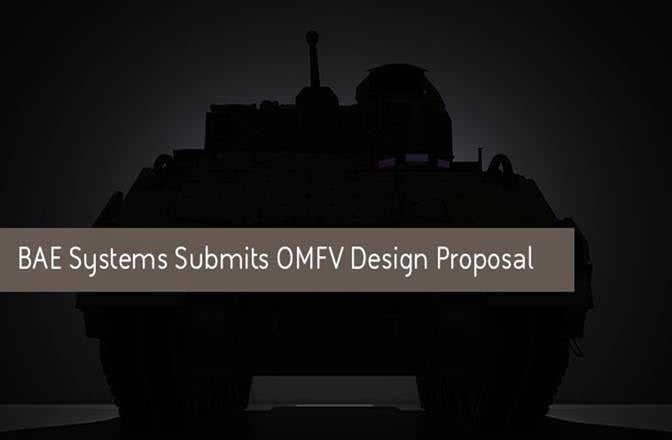
The mystery vehicle shown here in silhouette may be BAE’s proposed replacement for its M2 Bradley.
UPDATED with General Dynamics announcement WASHINGTON: BAE Systems, maker of the Army’s mainstay M2 Bradley armored troop transport, has formally submitted a proposal to replace it, the company announced today. General Dynamics, maker of the M1 Abrams tank, has also submitted an OMFV concept to the Army, the compact said.
GD’s release offers no details or imagery of their design. But featured on BAE’s press release is a shadowy silhouette of a turreted, tracked armored vehicle. It bears some family resemblance to the Bradley and its modernized offshoot, the Armored Multi-Purpose Vehicle (AMPV), but it is distinctly different from either.
Is this image of BAE’s proposed Bradley replacement? The company declined to confirm that or deny it.
The Army is currently soliciting “concepts” for a future Optionally Manned Fighting Vehicle, not complete designs. The aperture is wide open for weird ideas, the service has made clear. Industry could propose an AMPV hull with a new gun turret, said Brig. Gen. Richard Ross Coffman, the army’s armor modernization director, in a recent interview. Or, he said, a company could offer something widely unconventional, like a single mega-vehicle carrying 30 passengers or 30 mini-vehicles carrying one passenger apiece.
By comparison to these out-there ideas, the vehicle silhouetted on the BAE release looks fairly conventional – it could conceivably even be a modified, turreted AMPV. But, of course, we have no idea what kind of high-tech systems may be inside. One of the Army’s few hard-and-fast mandates for OMFV is that it must be able to operate in some missions by remote control, and even when fully manned, it should require only two crew (a driver and a gunner/commander), as opposed to the Bradley’s three (driver, gunner, and commander). Those characteristics will require an unprecedented degree of automation for a US Army combat vehicle.

The M2 Bradley has been repeatedly upgraded since its introduction, but after 40 years in service, the vehicle is reaching its limits.
While BAE is keeping quiet about its design, the company did announce last fall that it was partnering with the US branch of Israeli armsmaker Elbit “to develop and integrate advanced operational capabilities for combat vehicles.” The release boasts that Elbit is a “world leader” in advanced turret design — including fully unmanned turrets of the kind that OMFV would probably require.
Elbit has also been extensively involved in the Israeli military’s Carmel project to develop advanced armored vehicles with sophisticated sensors feeding a cockpit that looks more like a jet fighter’s than a tank’s.
BAE’s press release today was studiously bland, but it does specifically call out Elbit as a crucial partner, the only one identified by name. “BAE Systems is ready to answer the Army’s call for an advanced armored vehicle to support mechanized infantry operations through the Optionally Manned Fighting Vehicle (OMFV) program, and has submitted its design proposal to the Army,” the release runs. ”We are designing a combat system that will meet, with ample growth and adaptability, our Soldiers’ needs for lethality, mobility, and survivability on future battlefields. To do this we are teaming with innovators like Elbit Systems of America to provide the Army with the most capable next generation capability: the OMFV.”
Who’re BAE’s competitors? So far, we’re sure of one: Rheinmetall, maker of the German army’s Puma, is entering its Lynx AFV. The German firm is partnered with America’s Raytheon, L3Harris, and Allison Transmission.






















